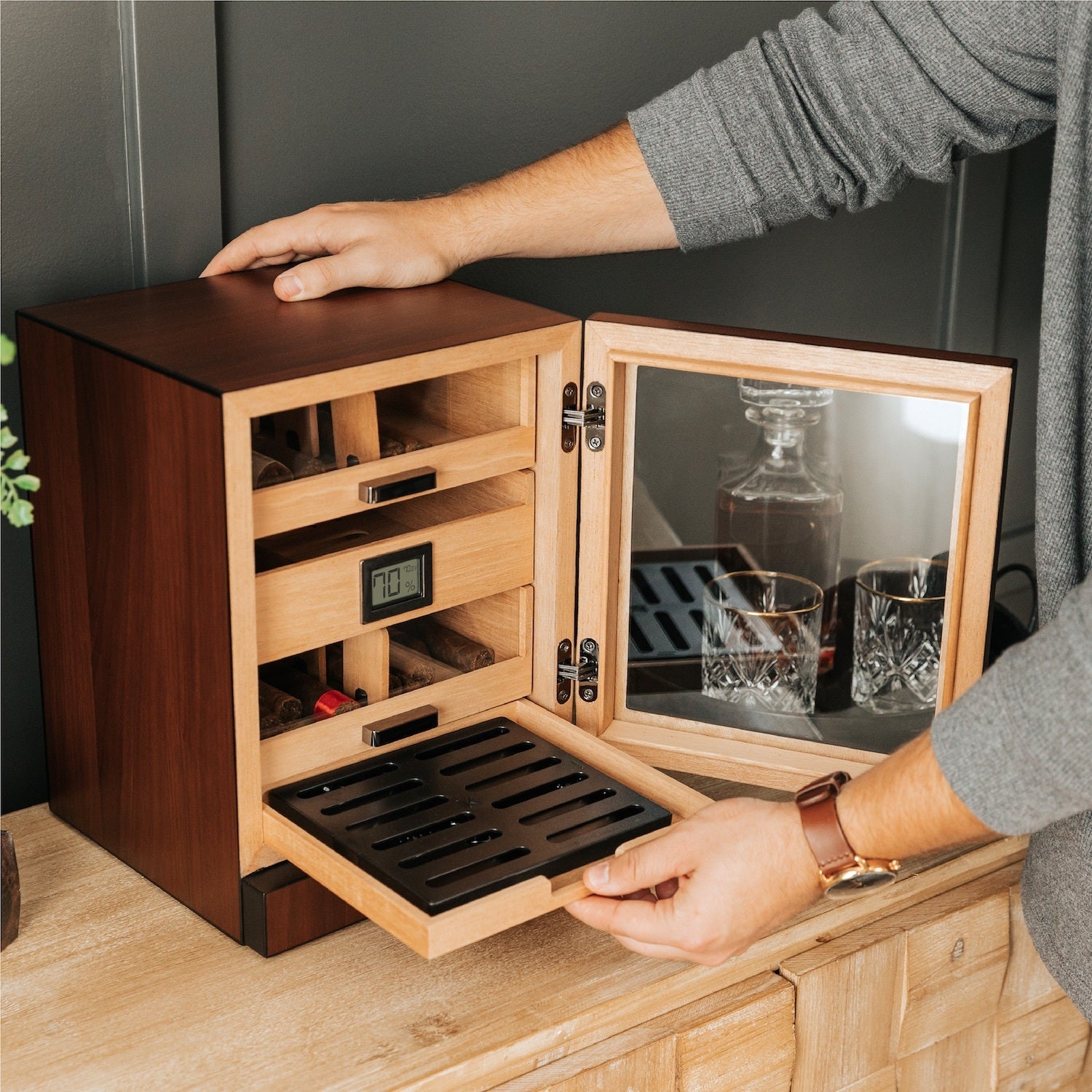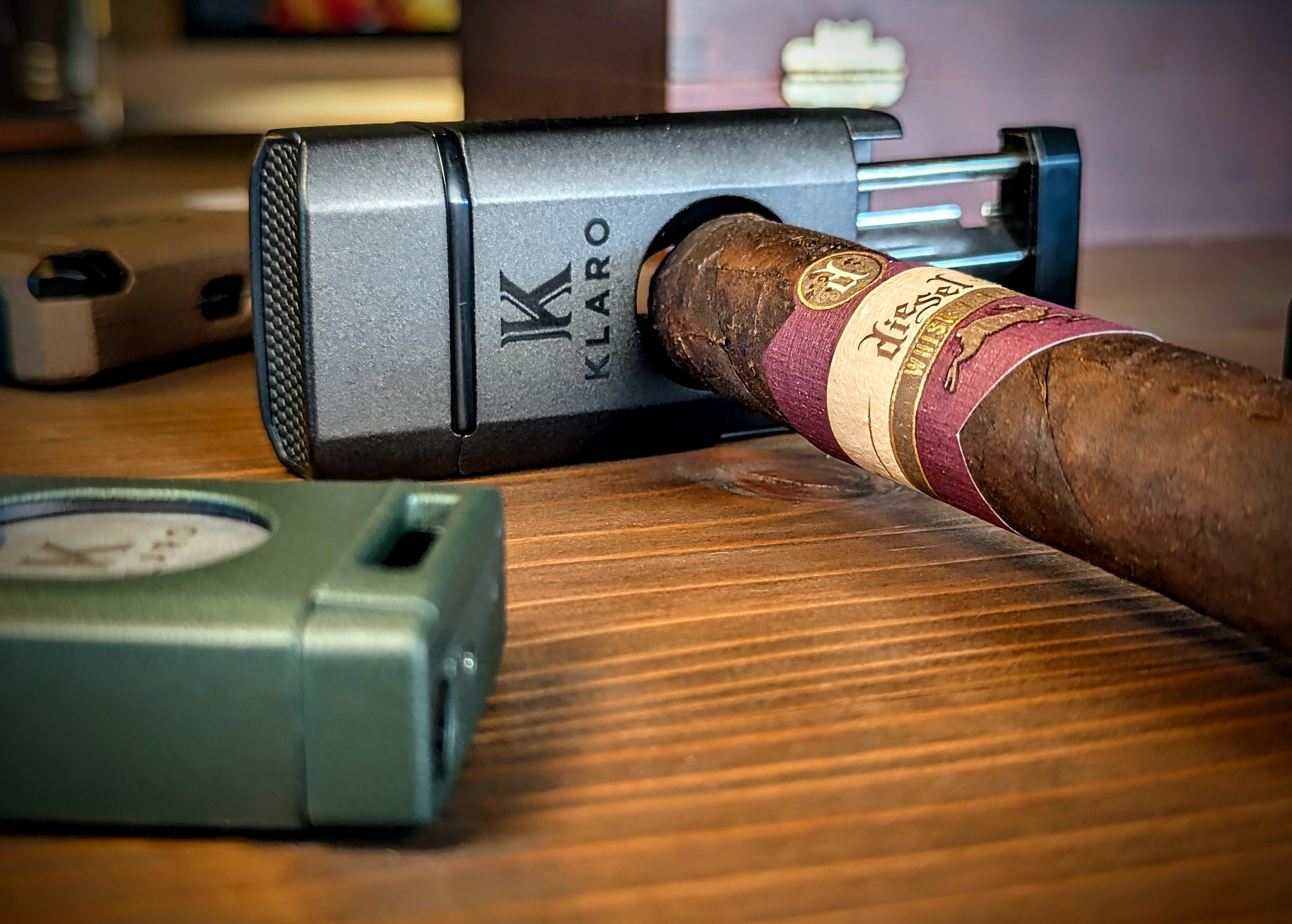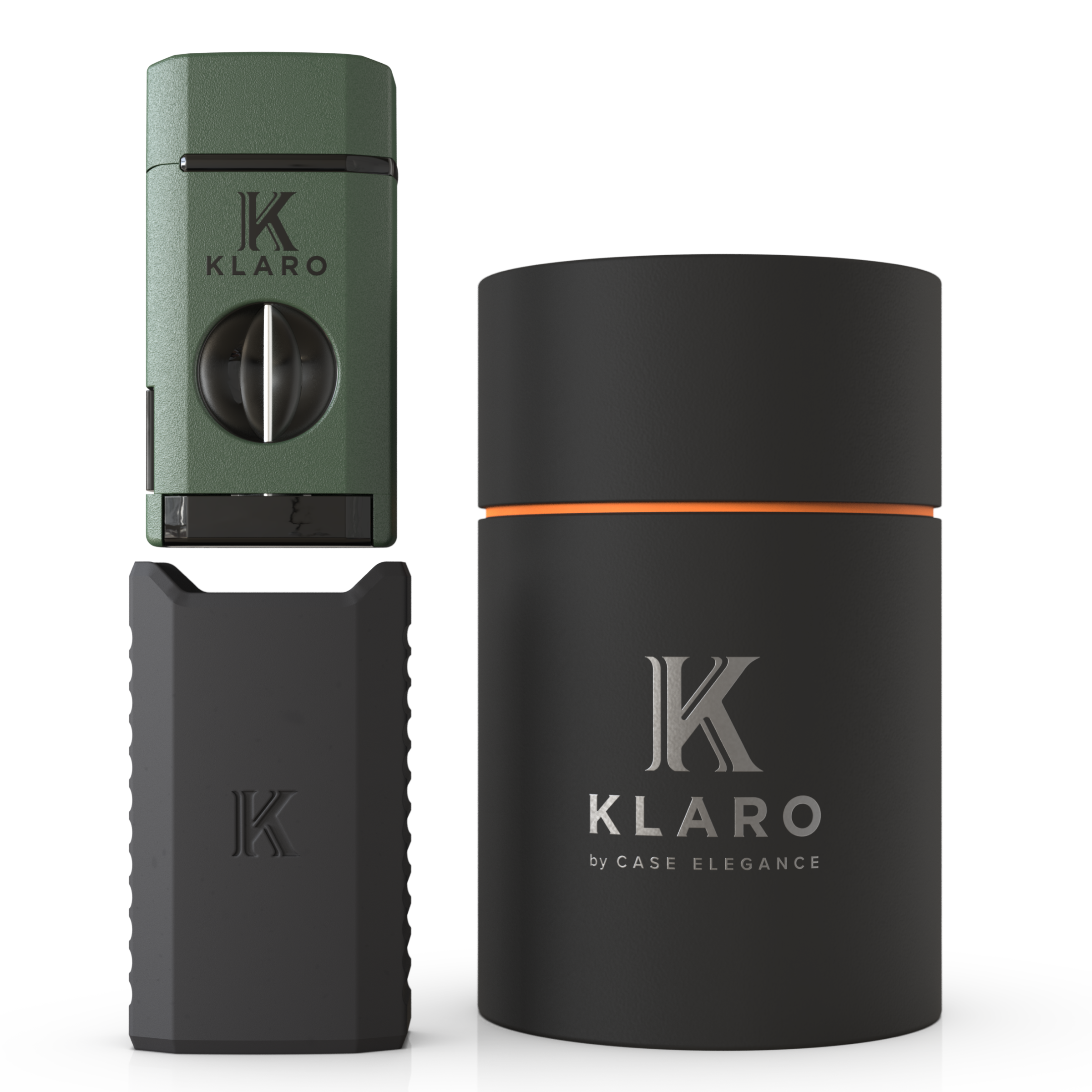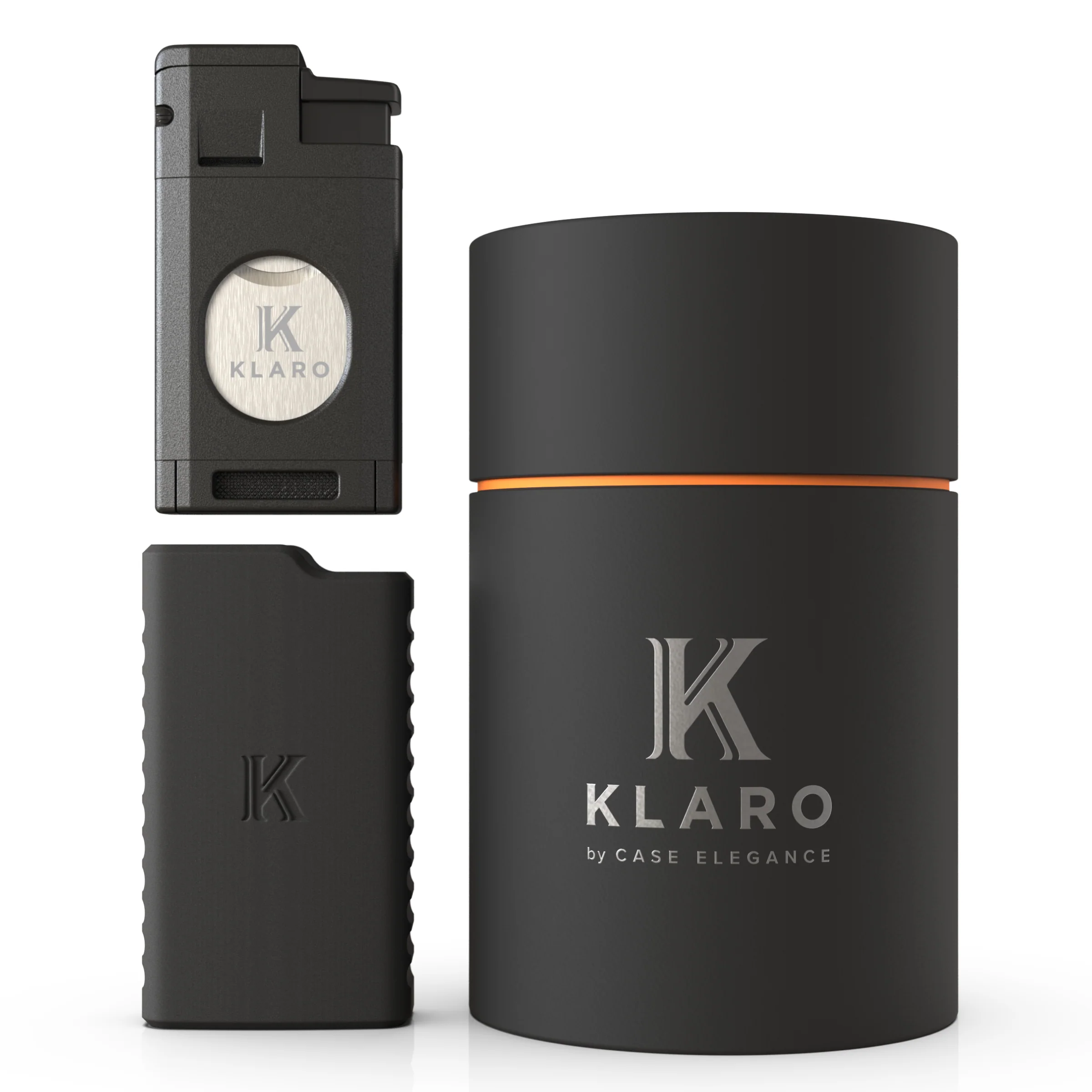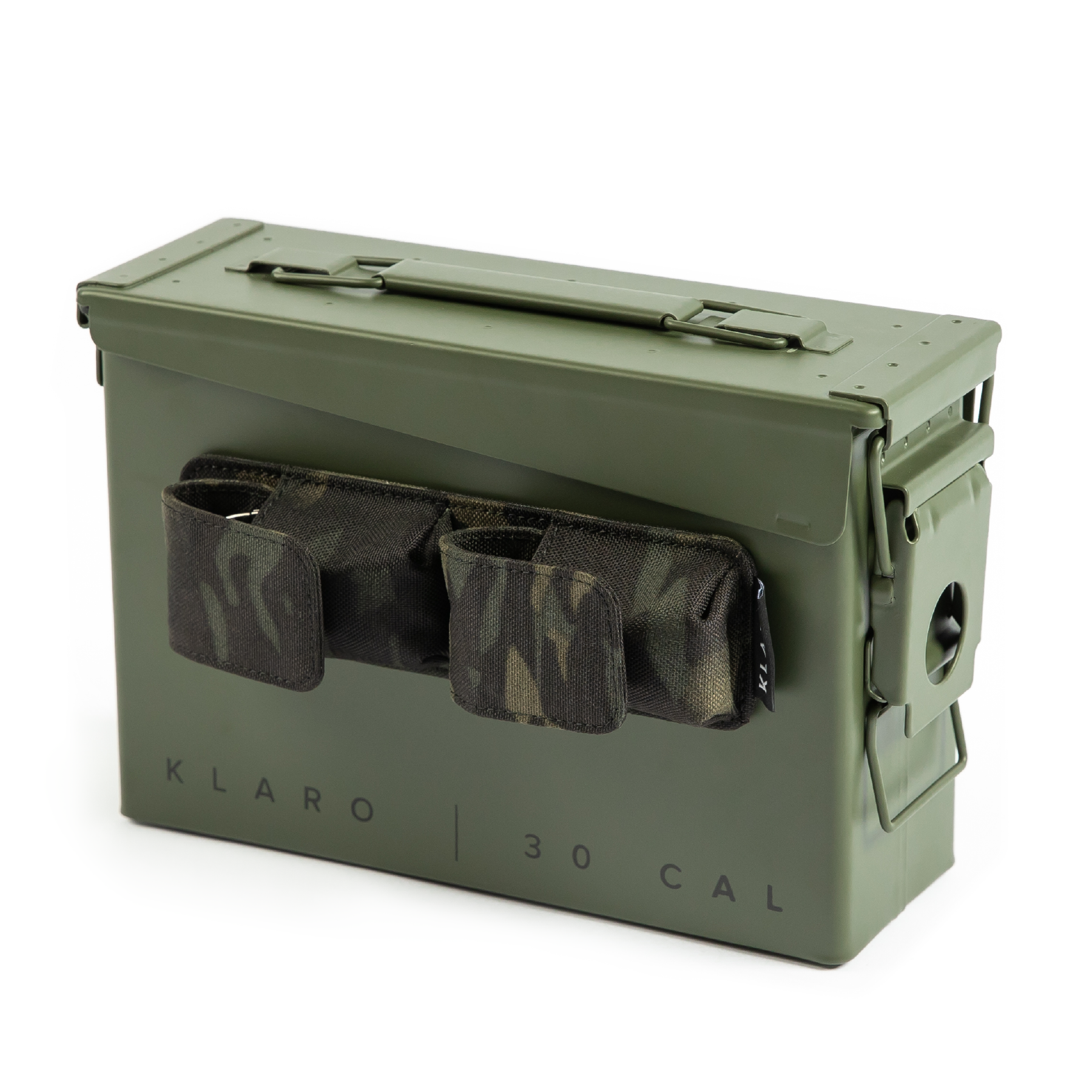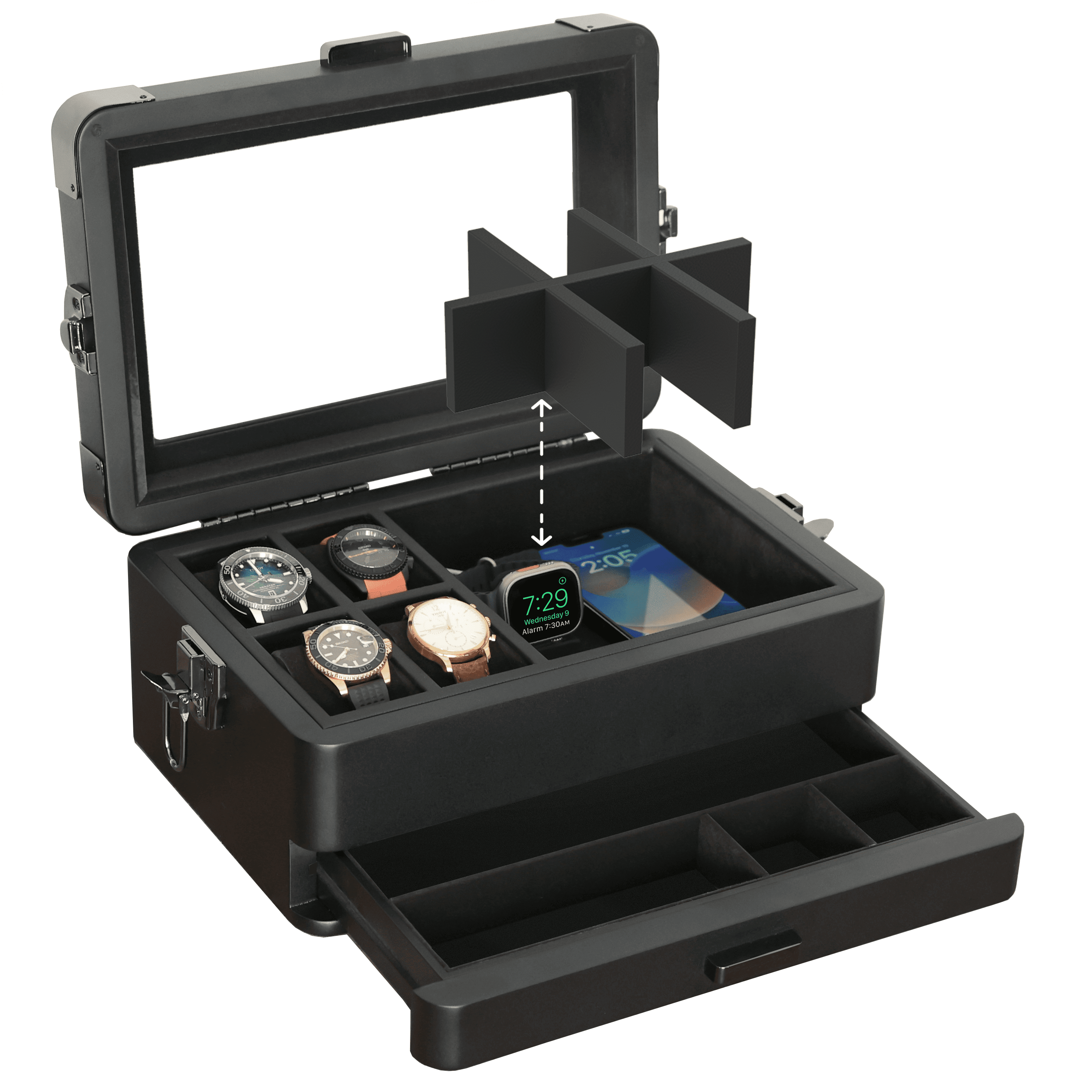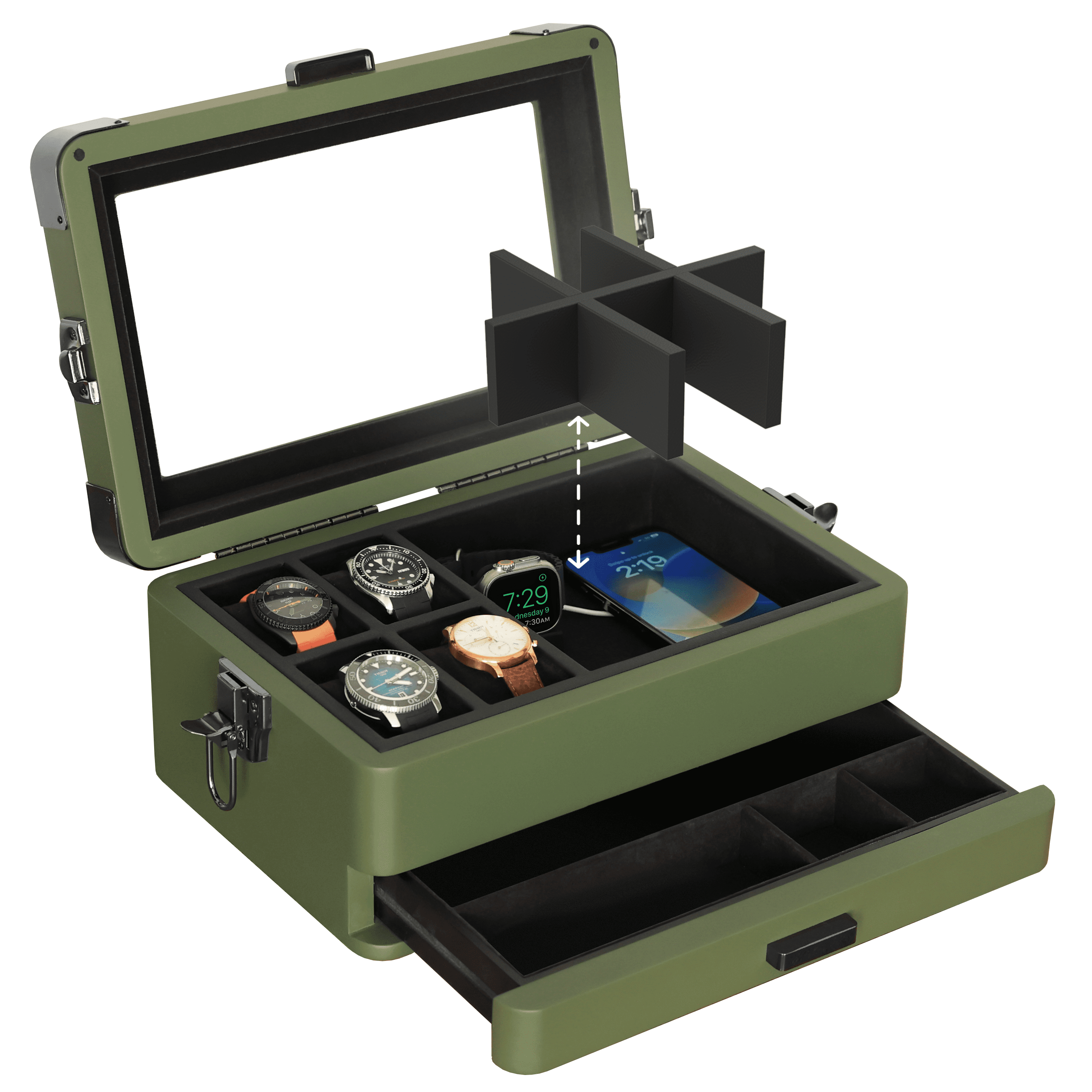For cigar smokers and collectors, humidors offer incredible convenience and protection. What is a humidor, you ask? Beyond giving your cigars a home, a good humidor allows you to purchase without fear of your cigars drying up or getting damp in the wrong conditions and ruined before you can smoke them. But there are some humidor mistakes to avoid and some humidor maintenance tips to remember to keep that important cigar accessory working.
Humidors are not quite “set-it-and-forget-it” appliances. Instead, they require a bit of prep work and minimal humidor care to ensure they can respond to different environmental conditions and keep your cigars at the correct humidity levels for long periods of time. In this article, we go over some important ways to keep your humidor healthy.

Choosing the Right Humidor
You will save time, money, and precious cigars by researching the best type and size of humidor based on your habits as a cigar connoisseur. Quality, too, should be a prerequisite. Let’s cover everything you need to know about choosing the right humidor.
Size and Capacity
Humidors capacity can range anywhere from five cigars to 5,000. However, most cigar smokers will be looking for something that falls between 50-500 cigar capacity. Unsurprisingly, this is based on how many cigars you want to be able to stock at any given time. That includes those you are about to smoke, those you plan to smoke in the future, give away, and those you are aging.
If you can’t imagine keeping more than 50 cigars in a humidor at once, you might be surprised. A few here, a few more
Keep in mind, too, that capacity ratings include the maximum amount of cigars a humidor can fit. But you should rarely (if ever) fill your humidor to its maximum capacity. That many cigars in your collection can tax the humidifier, which might lead to frequent humidor solution refills or, potentially, your cigars drying out. Aim to keep your cigar at 75-85 percent capacity.
Material Matters
Humidors can be made with many different materials: different types of humidor madera, glass, acrylic, and more. And that’s just covering the box or container, not the interior. Each has different advantages and disadvantages, aesthetic and functional, but the interior of your humidor is most important to get right.
We’re pretty bullish on this: Spanish cedar inlay is the most important element to have on the interior of your humidor. Whether that’s built into the humidor or supplemented with Spanish cedar spills, how this particular wood behaves with humidity will mean the difference between a humidor that works and one that doesn’t.
A Spanish cedar humidor will be particularly good at absorbing excess humidity and releasing it when the air becomes dry. This is ideal for humidor humidity control, because the wood will respond to the conditions to reach humidity equilibrium. Cigars love equilibrium…
Sistema de humidificación
Every humidor should have some type of humidifier—or a humidification system. This will be the humidor’s source of moisture. There are two main types of humidifiers: active and passive. Active humidifiers force humidity into the air with fans or motors. Passive humidifiers releas moisture into the air through natural processes of evaporation or osmosis.
If you have a big space in your humidor to control, an active humidification system is necessary. It’s just easier to get moisture into the air when needed. But if you are working with a desktop humidor, a passive system works fine—if not better. After all, active humidifications rely on batteries that can run out or electricity that can be lost at any given time. As long as passive humidifiers are filled, they work.

Proper Seasoning of Your Humidor
Seasoning a humidor refers to the process of prepping the interior material of your humidor—ideally Spanish cedar—to respond to fluctuating humidity levels. This is done prior to storing cigars. When you season your humidor, you bolster the wood with plenty of humidity to act as a buffer when the conditions become too dry. Here’s how.
Importance of Seasoning
A humidor can only add moisture to the air if there is moisture to release. Spanish cedar does this naturally when the wood is sufficiently humidified. This requires seasoning the wood. It’s a pretty simple process—no rubbing or manual work involved. Just a bit of humidor solution, patience, and monitoring.
But it’s an important process. Forgo seasoning and you begin a long battle against your humidor and will likely struggle to keep consistent humidity levels. Instead, every time you add a cigar or open the humidor, it will take a longer time to return to normal levels.
Step-by-Step Seasoning Process
Klaro offers step-by-step seasoning instructions for each humidor in the Klaro lineup. If you’ve purchased one with us, you can easily find your model and access the seasoning instructions based on the type of humidifier you have. The process is fairly straightforward: with a clean humidor (no dust or debris), you add solution to the humidifier and leave the top off, effectively bolstering the Spanish cedar with extra humidity. After reaching a specific humidification point for a number of days, you can cover your humidifier and begin adding cigars.
Note, you will need to monitor humidification levels with your hygrometer to ensure that adding cigars does not cause the relative humidity to dive. This might mean you need to reseason your humidor to add further moisture into the system.

Maintaining Optimal Humidity Levels
So what should a humidor be “set” at? Well, part of this is personal preference—because some smokers have different opinions on the what levels cigars smoke their best at. But here we’ll cover some of the basics.
Cigars should typically be stored between 65-72 percent relative humidity. If your humidor fall somewhere within this range, there’s a good chance your cigars will smoke just fine. But, as mentioned: different collectors have different theories.
Ideal Humidity Range
If you plan to age your cigars, use a lower humidity level. This can help concentrate the oils and flavors. Sixty-five percent relative humidity is a good place to start, though some cigar aficionados will go down to 62 percent.
The same goes with especially oily or spongy cigars: they might smoke better at a lower humidity level, so it’s not a bad idea to keep them at a lower humidity. However, dry-boxing your cigars will help prepare cigars to be smoked.
If your cigars are too dry, they risk burning unevenly or experiencing canoeing or tunnelling, when one side or the inside of the cigar burns too quickly. Too humid, and your cigar may smolder, burn unevenly, or not produce the same flavor profiel.
Tools and Techniques
Your humidor should include another important piece of equipment necessary to store cigars. That’s the hygrometer. A hygrometer measures the relative humidity of the air. This is how you know at what levels your humidor is set. Hygrometers can be digital or analog. For humidors, we highly recommend digital hygrometers because these are more reliable and do not require frequent calibration.
Common Humidor Mistakes and How to Avoid Them
So now that you know the basics, let’s make sure we prevent some common issues when using a humidor to store your cigars.

Over-Humidification
Cigars are at risk of two main problems: under-humidification or over-humidification. Too dry or too wet. Over-humidification means your cigars have been exposed to humidity levels higher than the recommended 65-72 percent relative humidity. This means there is too much moisture in the air y in the wood, so the cigars will naturally absorb it. This can cause problems when smoking your cigar. At worst, mold will develop.
If your hygrometer is working correctly, you will see when your humidor is too humid. If not, you can inspect the cigars for signs of mold or if they are “mushy” to the touch and do not spring back when pinched. Learn how to lower the humidity in a humidor to prevent this from happening to your cigars.
Under-Humidification
Your cigars may become too dry in an under-humidified humidor. This posses similar problems to how the cigar smokes: now your cigars will burn too quickly, unevenly, or will canoe or tunnel. Dry cigars will crackle when you roll them in your fingers and will not have the springy texture when pinched. Worst case scenario, the cigar wrapper cracks, which likely means it is unsmokeable.
Learn how to increase humidity in a humidor if you see that humidity levels have dropped on your hygrometer or if your cigars show signs of excessive drying.
Improper Humidor Placement
An incorrectly placed humidor can lead to a number of problems. Avoid placing your humidor near windows where it might be exposed to sunlight, near heating/cooling ducts within your house, or by exterior-facing walls that might be too cold in the winter. A cool dark place is ideal.
Neglecting Regular Maintenance
Humidors are fairly self-sufficient after seasoning. But you should still practice regular maintenance. Regularly clean your humidor of debris or dust, using a soft cloth. Never use cleaning chemicals.
Your humidification device requires the most concern, and that’s just to make sure there’s enough solution available. Regularly inspect the humidifier to ensure either the gel crystals are sufficiently absorbed or there is humidor solution present.
Ignoring Seasonal Changes
Different seasons (and climates) will cause humidifcation levels to change drastically. In many places, the typical trend is this: it’s more humid in the summer, dryer in the winter.
In the winter,winter and dry climate mix, which will help fight against the natural lower humidity of colder climates.

Advanced Tips for Humidor Care
We love the nuances of smoking cigars. And we love the nuance of caring for them, too. We’ve covered the basics of operating a humidor, but we’ve only tapped the surface of all the ways and strategies for storing cigars effectively and allowing them to smoke their best. Let’s explore a few advanced humidor maintenance tips.
Rotating Cigars
The cigars that are stored closest to the humidifier will be exposed to the most moisture. This is why most cigar collectors rotate their cigars every week or two. Simply practice the FIFO method: first in, first out. Gradually move the cigars that are closest to the humidifier to the far edge, and then back in.
Aging Cigars
Aging certain cigars can lead to enhanced flavor profiles and a smoother smoking experience. Cigars are already aged to some degree, but there are some that benefit from remaining in proper environments for several additional months or even years.
If you store your cigars for long periods of time, it’s especially important to have your humidor practices set. The longer you store cigars, the more risk they are exposed to, so you want to avoid fluctuations due to user error.
You may want to store cigars at a lower humidity level when you are aging them. This can help the flavors meld more fully, smooth out any harshness, and helps refine and balance the oils.
Traveling with Cigars
We briefly discussed how seasonal changes can affect outside humidity levels and those in your humidor. Similarly, traveling to different parts of the country (or world) can expose your cigars to significant humidity fluctuations. In these cases, we recommend traveling with a humidor de viaje to protect your cigars from damage while traveling and then having a more substantial humidor when staying anywhere for a week or more.
Troubleshooting Humidor Issues
Having issues with your humidor? Let’s explore some common problems and how to fix them.
Mold and Mildew
Unfortunately, a higher-humidity environment like a humidor can create the perfect conditions for mold or mildew to form. This is one reason why cleaning your humidor is recommended. In addition, we recommend using distilled water if you choose water over humidor solution, and you should refrain from over-filling your humidor, which can increase the likelihood of mold.
If you find mold or mildew in your humidor, a proper reset is in order: remove any affected cigars and discard, and separate those cigars that have not been affected. Next, remove everything from your humidor and wipe down and clean the area with vinegar and distilled water. Let the humidor air-out, and then reseason it.
Infestation Problems
Cigar beetles are an unfortunate reality you have to protect against when storing cigars for long periods of time. First and foremost, we recommend buying quality cigars from a company you can trust. Next, you may want to quarantine suspect cigars for a week or two away from your collection.
Your humidor should stay as close to 70 degrees Fahrenheit as possible to prevent any potential cigar beetles from hatching. It should not exceed 72 percent relative humidity for the same reason.
Fluctuating Humidity Levels
Slight humidity changes in your humidor are common. If it’s a percentage above or below your target relative humidity, give the humidor time, especially when adding new cigars. However, significant fluctuations require some investigation. Make sure the humidifier has plenty of humidor solution and check with a dollar bill to ensure that the seal is still complete around the lid of the humidor.
If you are still witnessing significant fluctuations, you may option to use humidor packs to see if this helps normalize the relative humidity or add a shot of distilled water to the humidor to provide additional moisture.
There are a number of variables when operating your humidor to get the desired result. But the more you understand how the components work together, the more you will be able to help your humidor respond to new conditions.
Check out these additional resources to learn more about caring for your humidor and cigar collection:
- What's the best humidor humidity range?
- Looking for an electric humidor for cigars?
- Do you know what makes the best torch lighter?
- How long do cigars last in a humidor?

